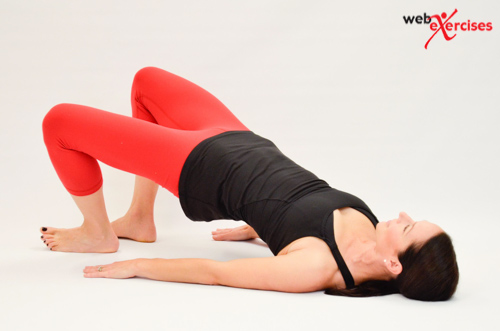
Summaries Courtesy of Strength and Conditioning Research Review
Effects of a Bridging Exercise with Hip Adduction on the EMG Activities of the Abdominal and Hip Extensor Muscles in Females.
Jang, Kim, and Ko, in Journal of Physical Therapy Science, 2013
What is the background?
Clinicians often advise using the glute bridge exercise to individuals with low back pain or hip problems in order to strengthen the gluteal and trunk musculature and to increase lumbo-pelvic stability. However, few researchers have investigated the effects of hip adduction moments during the glute bridge exercise on the activity of the various muscles involved.
What did the researchers do?
The researchers wanted to investigate the effects of the glute bridge with hip adduction on the EMG activities of the abdominal and hip extensors in 14 healthy female university students. The researchers used surface EMG electrodes in order to measure the activity of the external obliques, the rectus abdominis, the internal obliques and the gluteus maximus during both a standard bilateral glute bridge without additional load and also during a modified glute bridge with a hip adduction moment.
What did the researchers find?
The researchers found that the EMG activity as a percentage of MVIC of the various muscles during the glute bridge was as follows:
- Rectus abdominis 5.59 ± 3.59%
- External obliques 11.30 ± 5.06%
- Internal obliques 17.82 ± 17.63%
- Gluteus maximus 20.40 ± 8.90%
The researchers found that the EMG activity of the various muscles during the glute bridge with hip adduction moment was as follows:
- Rectus abdominis 10.43 ± 9.9%
- External obliques 22.11 ± 13.4%
- Internal obliques 26.97 ± 18.41%
- Gluteus maximus 26.88 ± 11.04%.
The EMG activity was therefore greater during the glute bridge with hip adduction moment in each of the muscles tested in comparison with the standard glute bridge.
What are the practical implications?
This study provides support for the use of a hip adduction moment for increasing the activity of the gluteus maximus and abdominal muscles during the glute bridge exercise.
The study
Effects of TRX versus traditional resistance training programs on measures of muscular performance in adults.
Janot, Heltne, Welles, Riedl, Anderson, Howard, and Myhre, in Journal of Fitness Research, 2013
What is the background?
The TRX device is relatively new but is now in common usage among strength and conditioning professionals. However, despite this common usage, the TRX device has not yet been compared to conventional resistance training using barbells, dumbbells and machines.
What did the researchers do?
The researchers compared the effects of TRX training with the effects of conventional resistance-training on strength, core endurance, flexibility, balance and body composition in both young (19 – 25 years) and middle-aged (44 – 64 years) adults. The subjects performed a 7-week intervention in which they trained using one or other of the methods, 3 times per week. The TRX group performed exercises using the TRX suspension device, including the chest press, suspended lunge, row, squat, YTW, single-leg deadlift, triceps extension, hamstrings curl, plank and Pallof press. The other group performed conventional resistance-training.
What did the researchers find?
In young adults, the researchers observed significant improvements from pre- to post-training in respect of abdominal flexor endurance, back extensor endurance, side bridge left and right, balance, flexibility, and lower body strength for both groups. However, they noted that lower body strength improved significantly more in the conventional group than in the TRX group. In middle-aged adults, the researchers observed significant improvements from pre- to post-training in back extensor endurance, side bridge left and right, and lower body strength in both groups but there were no significant differences between the groups.
What are the practical implications?
TRX training appears suitable for improving measures of muscular fitness in both younger and middle-aged adults to a similar extent to traditional resistance training. However, it is likely that conventional resistance training is superior to TRX training for lower body strengthening.


